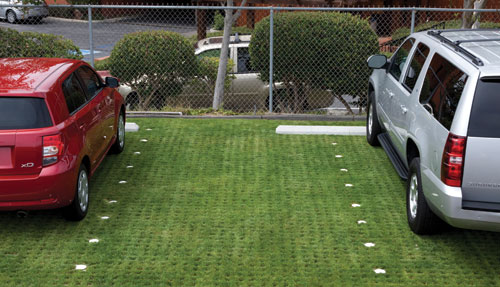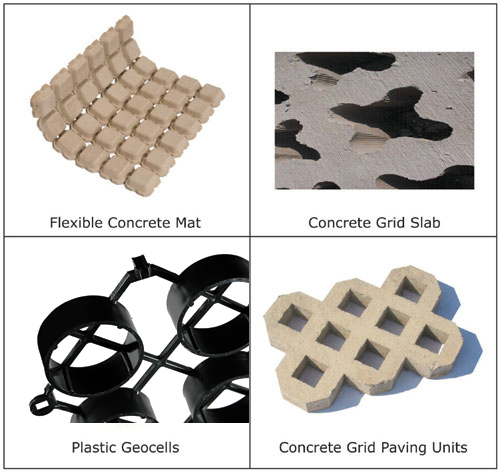Design Considerations for Vegetated Permeable Pavement
Learning Objectives:
- Define permeable pavement including vegetated permeable pavement types, applicable government regulations, and best management practices for their use.
- Recognize the environmentally friendly attributes of vegetated permeable pavement systems.
- Identify basic design considerations of vegetated permeable pavement.
- Contrast the attributes of the four main types of vegetated permeable pavements.
- Apply sustainable design considerations for vegetated permeable pavements to project types, including their application to LEED® and SITES® credits.
Credits:
Permeable paving systems, in general, continue to grow in scope and practicality as we search for ways to reduce our carbon footprint, improve water quality, diminish flooding and erosion, reduce the “urban heat island” from reradiated (building and pavement) heat in our cities and environment, and add attractive open space to building sites and neighborhoods. The current varieties of permeable pavements are permeable asphalt, permeable concrete, permeable interlocking concrete pavers, and vegetated permeable pavements. Most research on any permeable pavement considers all these types to “substantially and significantly” reduce stormwater runoff.1 Results from a study in 2007 at the North Carolina State University (NCSU) Permeable Pavement Research Lab showed that “all permeable pavements significantly and substantially reduced surface runoff volumes and peak flow rates when compared to standard asphalt…”
Vegetated permeable pavement will be the focus of this article, exploring some of the current environmental regulations, codes, and guidelines that incorporate their application, design considerations, modular options, and sustainable landscape benefits to help you make an informed decision. The main types of vegetated permeable pavements are flexible concrete mats, concrete grid slab, concrete grid paving units, and plastic geocells, each of which can be planted with turf or groundcover, or filled with aggregate or crusher fines.
Demonstrating Environmental Leadership
Using permeable pavement, whether vegetated or not, is one of several strategies within a comprehensive site design and green infrastructure approach to creating more functional and sustainable landscapes. The Environmental Protection Agency (EPA) considers “stormwater runoff in urban and developing areas to be one of the leading causes of water pollution in the United States.”2 Since 2007, using Section 438 of the Energy Independence and Security Act, EPA has required federal agencies to reduce stormwater runoff from federal projects, compelling agencies to “lead by example” to clean up water resources by using “green infrastructure and low-impact development” techniques. In 2011, the EPA compiled a list of green infrastructure case studies nationwide. As part of a national rule-making process to create an EPA program to reduce stormwater runoff, 47.3 percent of the 479 case studies used some type of permeable pavement system, with just over half of the projects being retrofits of existing properties. Various projects are represented, from commercial, institutional/education, open space/parks, and transportation. The EPA's website Green Infrastructure provides information on each case study, its location by region, and research associated with infrastructure types.
 |
| Photo courtesy of Soil Retention Products, Inc. |
What is Permeable Paving? Permeable paving is a range of sustainable materials and techniques for permeable pavements with a base and subbase that allow the movement of stormwater through the surface. In addition to reducing runoff, this effectively traps suspended solids and filters pollutants from the water.3 |
 |
Main types of vegetated permeable pavements Photo courtesy of Soil Retention Products, Inc. |









